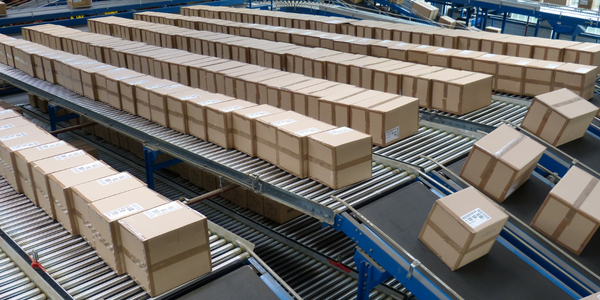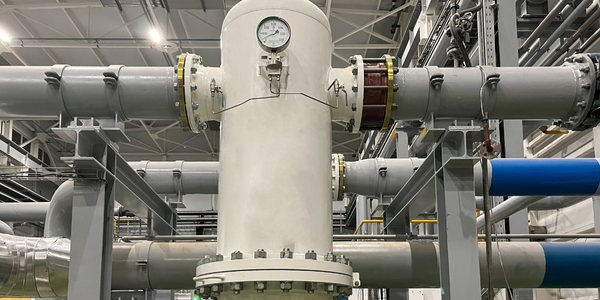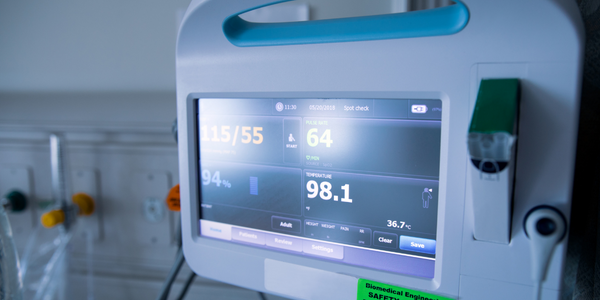Technology Category
- Cybersecurity & Privacy - Cloud Security
- Infrastructure as a Service (IaaS) - Public Cloud
Applicable Industries
- National Security & Defense
- Packaging
Applicable Functions
- Logistics & Transportation
Use Cases
- Cybersecurity
- Tamper Detection
Services
- Cloud Planning, Design & Implementation Services
- Cybersecurity Services
About The Customer
o9 Solutions is a leading provider of an AI-powered planning, analytics and data platform called the Digital Brain. This platform helps companies transform traditionally slow and siloed processes into smart, integrated and intelligent planning and decision-making across the core supply chain, commercial and P&L functions. Founded in 2009 and headquartered in Dallas, Texas, o9 Solutions now operates globally, serving many Fortune 500 businesses such as Walmart, Starbucks, Nestle, Crocs, Philips, Sony and Samsung. The company employs 2,400 people and delivers its services via a multi-tenant cloud environment based on AWS, Azure and Google.
The Challenge
o9 Solutions, a leading AI-powered planning, analytics and data platform provider, faced a significant challenge in ensuring the security of its Fortune 500 customers' data. The company delivers its services via a multi-tenant cloud environment based on AWS, Azure and Google, making identity protection and management crucial to access control. However, as cyber threats became more widespread and sophisticated, the visibility of identity and threats became poor and disconnected. There was no centralized way to monitor and control the various cloud environments the company used. The company needed to develop a more robust and effective Privileged Access Management (PAM) capability to match or exceed the cybersecurity and corporate governance strategies of its large, global customers. The customers needed reassurance about how o9 Solutions managed and controlled access to their data and the environment.
The Solution
o9 Solutions partnered with CyberArk and deployed CyberArk Privilege Cloud as its corporate PAM solution with advanced security controls, which includes credentials protection and rotation, session isolation, session monitoring and recording. The solution was deployed to 3,500 servers across the company’s multi-tenant cloud environment in less than three months. The company used the CyberArk Jump Start Package to support a faster deployment and identify credentials and privileged accounts. o9 Solutions took a phased approach to develop and deploy the CyberArk PAM solution inclusive of Privilege Cloud and Vendor Privileged Access Manager. It started with the most critical users, such as third parties in o9 Solutions offices and test environments. The company plans to expand its use of the CyberArk Identity Security platform with two additional web and cloud applications to further enhance its security posture.
Operational Impact
Quantitative Benefit

Case Study missing?
Start adding your own!
Register with your work email and create a new case study profile for your business.
Related Case Studies.

Case Study
IoT Data Analytics Case Study - Packaging Films Manufacturer
The company manufactures packaging films on made to order or configure to order basis. Every order has a different set of requirements from the product characteristics perspective and hence requires machine’s settings to be adjusted accordingly. If the film quality does not meet the required standards, the degraded quality impacts customer delivery causes customer dissatisfaction and results in lower margins. The biggest challenge was to identify the real root cause and devise a remedy for that.

Case Study
Zenon the Ideal Basis for An Ergonomic HMI
KHS develops and produces machines and equipment for filling and packaging in the drinks industry. Because drinks manufacturing, filling and packaging consist of a number of highly complex processes, the user-friendly and intuitive operation of equipment is increasingly gaining in significance. In order to design these processes as simple as possible for the user, KHS decided to introduce a uniform, transparent and standardized solution to the company. The HMI interface should meet the requirement for people with different qualifications and enable them to work on a standard platform.

Case Study
Data Capture for Afghanistan Forces
Electronic equipments on the field of Afghanistan provided information on the status of the vehicle and to identify potential threats surrounding it to the British Force. The monitoring and interpretation of this data requires robust and sophisticated digitization for data capture and communication.

Case Study
Sparks Dynamics Assists Atlas Container Secure a $15,000 BGE Energy Rebate
The ReMASTER Compressed Air Monitoring system was installed in 2015. This system is capable of monitoring compressed air system parameters on a continuous basis and transferring that information to a cloud server which can be accessed by Atlas Container personnel, Industrial Diagnostics and Sparks Dynamics. This information was collected into a database which can be exported to an Excel spreadsheet or displayed graphically using Sparks Dynamics ViewMaster Software. The average annual compressed air electricity expense was estimated to be approximately $116,000. This is based on an incremental $/KWh electric rate of $.091 per KWh and an estimated compressed air energy consumption of 1,279,200 KWH. The implementation phase of Energy Conservation Measures (ECMs) for the Compressed Air System included: • Identification and repair of compressed air leaks • Understanding of compressed air usage per manufacturing machine and installation of shut off valves when the machines are no longer in production mode • Identification of misapplications of compressed air to include blow offs, venturis, and cooling scenarios • Understand system pressure requirements and potential installation of point of use pressure regulation.

Case Study
Automated Pallet Labeling Solution for SPR Packaging
SPR Packaging, an American supplier of packaging solutions, was in search of an automated pallet labeling solution that could meet their immediate and future needs. They aimed to equip their lines with automatic printer applicators, but also required a solution that could interface with their accounting software. The challenge was to find a system that could read a 2D code on pallets at the stretch wrapper, track the pallet, and flag any pallets with unread barcodes for inspection. The pallets could be single or double stacked, and the system needed to be able to differentiate between the two. SPR Packaging sought a system integrator with extensive experience in advanced printing and tracking solutions to provide a complete traceability system.

Case Study
Mondi Implements Statistics-Based Health Monitoring and Predictive Maintenance
The extrusion and other machines at Mondi’s plant are large and complex, measuring up to 50 meters long and 15 meters high. Each machine is controlled by up to five programmable logic controllers (PLCs), which log temperature, pressure, velocity, and other performance parameters from the machine’s sensors. Each machine records 300–400 parameter values every minute, generating 7 gigabytes of data daily.Mondi faced several challenges in using this data for predictive maintenance. First, the plant personnel had limited experience with statistical analysis and machine learning. They needed to evaluate a variety of machine learning approaches to identify which produced the most accurate results for their data. They also needed to develop an application that presented the results clearly and immediately to machine operators. Lastly, they needed to package this application for continuous use in a production environment.



